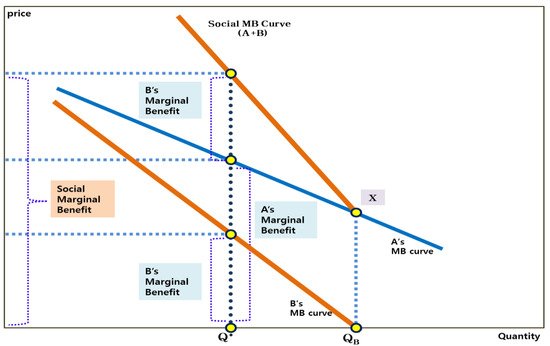Credit Balance Meaning, Explanation, Examples, Accounts
Content
- Credit Balance Meaning
- What Are Some Examples of Debits & Credits?
- Accounting 101: Debits and Credits
- The five accounting elements
- The Cash account has a credit balance. Which statement is true? a. This is the normal balance for…
- Debit and credit examples
- How are accounts affected by debit and credit?

If you have a https://personal-accounting.org/ balance instead, that means your cash is currently in the red. All asset accounts such as Cash, Accounts Receivable, Inventory, Prepaid Expenses, Buildings and Equipment normally have debit balances.
What does it mean when a cash account has a credit balance?
If the total of your credits exceeds the amount you owe, your statement shows a credit balance. This is money the card issuer owes you. You can call your card issuer and arrange to have a check sent to you in the amount of the credit balance.
Seamlessly integrate with all intercompany systems and data sources. Automatically identify intercompany exceptions and underlying transactions causing out-of-balances with rules-based solutions to resolve discrepancies quickly. Make the most of your team’s time by automating accounts receivables tasks and using data to drive priority, action, and results. Monitor and analyze user performance, ensuring key actions quickly. Transform your order-to-cash cycle and speed up your cash application process by instantly matching and accurately applying customer payments to customer invoices in your ERP.
Credit Balance Meaning
Moreover, the examples encompass partnerships and LLCs, sole proprietorships, and shareholders. Ledger in AccountingLedger in accounting records and processes a firm’s financial data, taken from journal entries. This becomes an important financial record for future reference. While a long margin position has a debit balance, a margin account with only short positions will show a credit balance.
When can a cash account have a credit balance?
A negative cash balance results when the cash account in a company's general ledger has a credit balance. The credit or negative balance in the checking account is usually caused by a company writing checks for more than it has in its checking account.
As long as you ensure your debits and credits are equal, your books will be in balance. This will help ensure that all of your general ledger account balances are correct, and allow you to generate accurate financial statements that give you insight into your business finances. An accounting system tracks the financial activities of a specific asset, liability, equity, revenue or expense. You’ll record each individual account in a ledger and use this information to prepare your financial statements. Records increase and decrease as accounting transactions occur, and this movement represents the diametrical relationship between debits and credits. Debits and credits are used in a company’s bookkeeping in order for its books to balance. Debits increase asset or expense accounts and decrease liability, revenue or equity accounts.
What Are Some Examples of Debits & Credits?
A debit means what is due or owed—it refers to money going out. Credit means to entrust or loan—it refers to money coming in. Whether you’re creating a business budget or tracking your accounts receivable turnover, you need to use debits and credits properly. Intraday Buying Power – This balance field applies only to Pattern Day Trade accounts and Limited Margin accounts and is the amount that can be used to buy stock or options intended to be day traded. Unlike Day Trade Buying Power, this value does update intraday to reflect day trade executions, money movement into and out of the account, core cash, and buying power allocated to open orders.
- Any transaction the includes the payment or disbursement of cash is recorded on the credit side of the cash account.
- But it’s an integral business activity that helps you generate invoices, pay your employees and bills and understand your business’s overall health.
- The credit side of the entry is to the owners’ equity account.
- We can illustrate each account type and its corresponding debit and credit effects in the form of anexpanded accounting equation.
- So do most expense accounts such as Interest, Wages and Rent.
- Again, according to the chart below, when we want to decrease an asset account balance, we use a credit, which is why this transaction shows a credit of $250.
Recording a sales transaction is more detailed than many other journal entries because you need to track cost of goods sold as well as any sales tax charged to your customer. As a business owner, you may find yourself struggling with when to use a debit and credit in accounting. Once you complete the online enrollment process, Limited Margin is immediately available on your account. The Cash/Margin trade type drop down will appear on the trade ticket and default to Margin for orders placed in your IRA.
Accounting 101: Debits and Credits
Liability accounts record debts or future obligations a business or entity owes to others. When one institution borrows from another for a period of time, the ledger of the borrowing institution categorises the argument under liability accounts.
PenFed Platinum Rewards Visa Signature Card: Earn Top Rewards … – CNET
PenFed Platinum Rewards Visa Signature Card: Earn Top Rewards ….
Posted: Sun, 19 Feb 2023 00:00:02 GMT [source]
The Why Would a Cash Account Have a Credit Balance? of using debits and credits creates a ledger format that resembles the letter “T”. The term “T-account” is accounting jargon for a “ledger account” and is often used when discussing bookkeeping.
3 2 Four major circumstances in which adjusting journal entries are necessary Accounting Business and Society
Content

Adjusting Entries are the 4th step in the accounting cycle. To begin the process, an unadjusted trial balance must be prepared.

The $2,500 was given in the transaction, but now we know what to do with it. If you can predict what the balance should be in the account, you can do a T-account to make sure your entry will actually do what you predicted.
2 Four major circumstances in which adjusting journal entries are necessary
All financial reporting is based on the data contained in journal entries, and there are various types to meet business needs. Insurance policies can require advanced payment of premiums for several months at a time, twelve month, for example.
- If there is a difference , an adjusting entry must be made.
- It is usually not possible to create financial statements that are fully in compliance with accounting standards without the use of adjusting entries.
- Accounting for unearned revenue can also follow a balance sheet or income statement approach.
- They are a necessary part of the accrual accounting process and a very important part of the accounting cycle.
- Each entry impacts at least one income statement account and one balance sheet account (an asset-liability account) but never impacts cash.
- Supplies are initially recorded as an asset, but they get used up over time.
Is needed to cause the accounts to appropriately reflect those changes. These adjustments typically occur at the end of each accounting period, and are akin to temporarily cutting off the flow through the business pipeline to take a measurement of what is in the pipeline. This is consistent with the revenue and expense recognition rules. When posting any kind of journal entry to a general ledger, it is important to have https://online-accounting.net/ an organized system for recording to avoid any account discrepancies and misreporting. To do this, companies can streamline their general ledger and remove any unnecessary processes or accounts. Check out this article “Encourage General Ledger Efficiency” from the Journal of Accountancy that discusses some strategies to improve general ledger efficiency. In the journal entry, Supplies Expense has a debit of $100.
Illustration of Prepaid Rent
The point is to make your accounting ledger as accurate as possible without doing any illegal tampering with the numbers. You have your initial trial balance which is the balance after your journal entries are entered. Then after your adjusting entries, you’ll have your adjusted trial balance. If you don’t adjust your adjusting entries, your balance sheets may be inaccurate. That includes your income statements, profit and loss statements and cash flow ledgers.
A debit must be made to Wage Expense for $400 and a credit must be made to Wages Payable for $400. First, during February, when you produce the bags and invoice the client, you record the anticipated income. Adjusting entries are also an essential part of a business’s depreciated assets, so not doing them can mean that you miss out on valuable tax deductions. Account Reconciliations also integrates with BlackLine Transaction Matching to provide automated analysis of transaction details. This solution also simplifies the process of handling prepaid amounts.
What Solutions Does BlackLine Offer?
That statement should make you think of unearned revenue because it has not been earned. If $3,000 has been earned, the Service Revenues Basic Transactions and Adjusting Entries Accounting Principles account must include $3,000. The remaining $1,000 that has not been earned will be deferred to the following accounting period.



